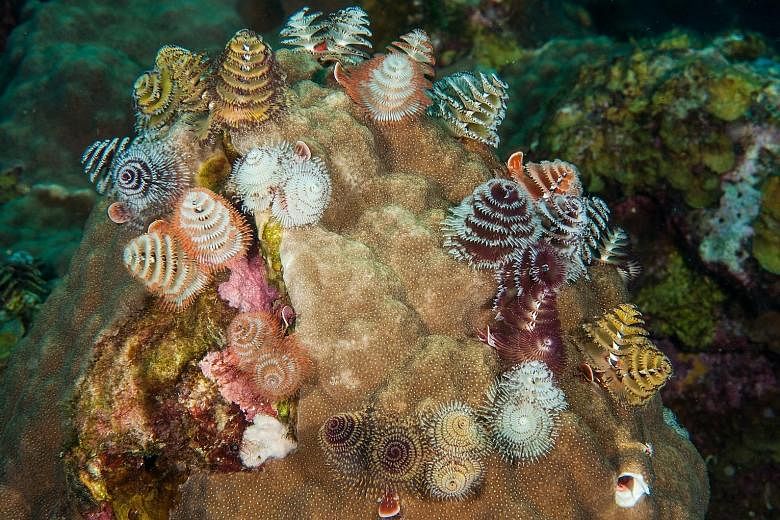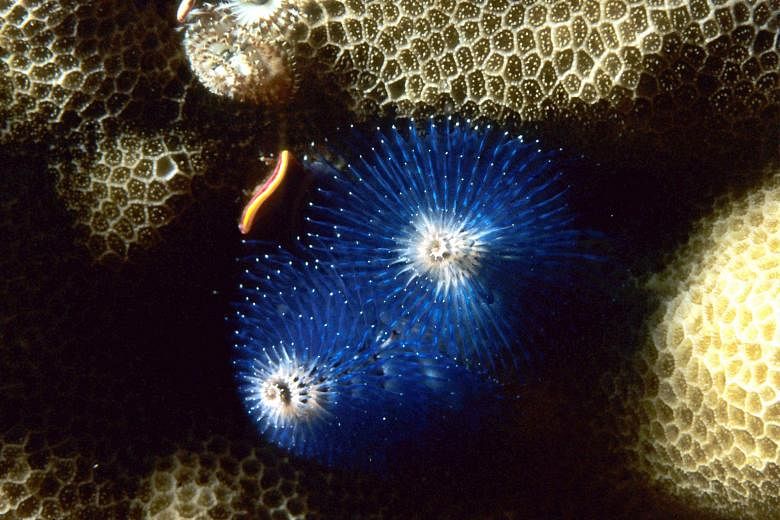Your Christmas tree is nice - really, it is. It's just the right height and shape, so green, and it smells so good. You definitely picked the best one in all of the land.
But that's where you messed up.
The most beautiful Christmas trees don't grow in soil. They're not even plants. And you shouldn't take them home or decorate them.
Allow me to introduce a sea creature that will put your Christmas tree to shame: Its name is Spirobranchus giganteus, but most people call it the Christmas tree worm.
These animals live on coral reefs in tropical and subtropical waters around the world, building tiny, tubular homes with their own secretions of calcium carbonate. They emerge from these tubes to filter feed, procreate and breathe with a part of their body called the branchial crown.
You can't miss these bright, spiral-shaped cones while snorkelling, if you know what to look for. They look like miniature decorated firs.
"They're really pretty, very colourful, very festive and 'Christmas-sy'," said marine biologist Orly Perry, who studies them as a doctoral student at Bar-Ilan University in Israel.
Most of the "trees", which come in pairs, protrude no more than an inch from the tube's opening. But they make up for their small size with colourful displays that look like the work of a talented candy-maker. Many spiral out in a mixture of purple, green and white where Ms Perry works, in the Gulf of Aqaba in the Red Sea near Eilat, Israel. But they come in many other colours too, and some even don an appropriate solid winter white.
Male and female Christmas tree worms reproduce by casting their sperm and eggs into the water in synchrony. Fertilised eggs then develop into larvae that find a coral to make a home.
They don't burrow into it. Instead, they latch on to a dead spot or wound and start making their tubes. By adjusting the tube's growth rate to match the coral's growth, the worm keeps up with the coral growing around its tube and maintains an entrance to its home.
Settled Christmas tree worms stay for life - up to 30 or 40 years. "They cannot say, 'This is not for me' and move," said Ms Perry. "It's crucial to look for the right place."
These places aren't random. The larvae seem to know which corals are which. Some worms of the Spirobranchus genus prefer certain coral species or types, typically less aggressive ones. And a few like artificial surfaces. Ms Perry found a potentially new species in the Gulf of Eilat that prefers plastic buoys and pieces of metal on piers and staircases.
The larvae may follow signals from elderly worms to locations that have worked well for others of their genus. In those preferred habitats, they grow big.
"This is kind of like humans. If you stick around in a place, you feel comfortable, then everything is happy," said Ms Perry. "In the case of the worms, it affects their size."
Corals benefit too. Researchers have found that Christmas tree worms may protect some corals from bleaching, algal smothering and predation from animals like crown-of-thorns starfish.
Once stuck, Christmas tree worms can't run, but they can hide. Sensing touch, chemicals and light, they can perceive danger. When it approaches, the worms retract, vanish into their homes and slam shut an organ called an operculum - just like a door.
But the worms spend most time out of their tubes feeding, all year, day or night - which kind of means for corals, it's Christmas all the time.
For a spectacular display, experienced snorkellers can head out at night with a UV flashlight when their coral neighbourhoods fluoresce.
NYTIMES


